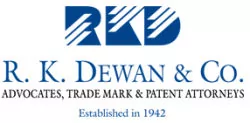A recent order of the USPTO (which we appreciate for its simplicity in thought and clarity in expression) very easily puts forth as to how one must assess if there is likelihood of confusion between contending trademarks. While there are other secondary factors which are assessed in complex cases, for beginners, this case is a good start:
In 2015, Louis Vuitton Malletier (“LV”), applied for the registration of its trademark APOGÉE at the USPTO. The Trademark Examining Attorney refused to register APOGÉE since the mark resembled the word mark APHOGEE which was registered for hair care products by KAB Brands (“KAB”). LV appealed against this decision.
The Appellate Board stated that, “in any likelihood of confusion analysis the key considerations are the similarities between the marks and the similarities between the goods.’.
LV contended that its mark did not resemble KAB’s since ordinary consumers in America were familiar with French and would translate LV’s mark APOGÉE to mean “height”. They would also pronounce it as “A-PO-ZHAY”. The Board did not agree with this contention. It held that the registered mark APHOGEE was a coined term. Since it is not a dictionary word, the consumers may pronounce it in more than one ways. Its pronunciation could not be definitively determined. LV also pointed out that the marketing materials used by KAB for APHOGEE products state that it is “pH optimized”. Therefore, it was most likely that the mark will be used as ApHOGEE, with ‘pH’ signifying the pH optimization in the products. The Board however observed that the registered mark APHOGEE was a word mark, hence it could not be restricted to a particular form of writing.
The Board concluded that when considered as a whole, both LV’s and KAB’s marks are similar in appearance, sound, connotation and commercial impression and therefore there is a likelihood of confusion.
With respect to the second point of assessing similarities, the Board relied on the case of Octocom v. Hous. Computs. Servs. Inc. wherein it was observed that, if the circumstances surrounding the marketing of goods under the contending marks could give rise to the mistaken belief that the goods emanate from the same source, then there is a likelihood of confusion.
LV’s goods consist of perfumery products while KAB’s goods consist of hair care products; however they both fall under the general category of beauty and personal care products. The Board also observed that there were many brands such as Calvin Klein Eternity, Clinique, Jack Black that sold perfumery and hair care products under the same brand. The Board held “The issue is not whether the goods will be confused with each other, but rather whether the public will be confused as to their source.” Therefore it concluded that there was likelihood of confusion with respect to the goods as well.
The Board observed that even though LV was to sell its products in Louis Vuitton Malletier’s store-within-store partnerships with high end retail stores within Louis Vuitton Malletier’s exclusive distributor network only, there was no proof that the trade channels are mutually exclusive and would never overlap.
Therefore, the Board observed that the trade channels of sale of both the goods as well as the conditions of sale were also similar enough to cause confusion. In view of all these considerations, the decision for refusing registration to LV’s mark APOGEE was upheld.
Compiled by: Adv. Sachi Kapoor | Concept & Edited by: Dr. Mohan Dewan
The content of this article is intended to provide a general guide to the subject matter. Specialist advice should be sought about your specific circumstances.

